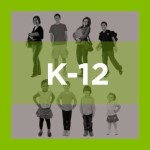States and districts are finding avenues to assist homeless students, a population who struggles to be seen and whose numbers continue to rise in many states. State educational agencies reported that 1.3 million homeless students were enrolled in public schools during the 2016-17 school year. Imagine that number for a moment — 1,355,821 — which is more than the entire student population of the New York City school system. This is a 7 percent increase from the 2014-15 school year.
During 2016-17, the states with the highest student populations have also experienced the highest increases in enrolled homeless students — including California, New York, Texas, Florida and Illinois. Some states also saw increases of 25 percent or more in the number of enrolled homeless students between 2014-15 and 2016-17. They are, in order of the largest percentages, the District of Columbia, Louisiana, Connecticut, Maine, Tennessee and New York. With this rise in the homeless student population, what are states doing to address their needs?
Federal Funding
The Education for Homeless Children and Youths Program — housed in the U.S. Department of Education and authorized by the federal McKinney-Vento Act — distributes grant funding to states. During 2016-17, EHCY distributed over $68 million in grant funding — or an annual average per pupil of $79.61 — to all 50 states and the District of Columbia to address the unique educational challenges faced by students experiencing homelessness. In some states, where EHCY’s funding might not be sufficient to cover all the services homeless students need, states and districts are moving to implement creative solutions.
State and District Initiatives
Under the act, as amended by the Every Student Succeeds Act, homeless students are required to have access to the same public education — including access to any programs and services for which they meet eligibility requirements — provided to other students. There are additional requirements that further assist homeless students, including disaggregating data for homeless students in state accountability reporting, designating a local homeless liaison and increasing emphasis on identification.
Over the past five years, a handful of states have passed legislation to complement these federal requirements and to increase graduation rates for homeless students. New Mexico H.B. 301 (2017) requires that a student who has transferred because of a disruption in the student’s education process, including homelessness, has priority placement in courses that meet state graduation requirements and timely placement in elective classes comparable with those in which the student was previously enrolled. Washington S.B. 5241 (2017) requires districts to waive courses required for graduation if similar coursework has been satisfactorily completed in another district or provide an alternative means for the student to graduate on time; it also requires districts to consolidate partial credit and other incomplete coursework and provide opportunities for credit accrual in a manner that eliminates barriers for the student.
Some school districts are also finding ways to help homeless students. The Kansas City Public Schools in Kansas created a community-backed program, with the assistance of its local homeless liaison, to help families facing homelessness. Impact Wednesday, the community-based program, enlists partners to assist parents with employment, housing and child care and to provide education classes on personal finance and health. The program also seeks to guarantee every family has a case manager to help them. The district has helped 224 families find permanent housing in the first three years of the program. The Denver Public Schools Homeless Education Network in Colorado provides guidance and a connection to city-area support services for homeless families. The network can provide additional help, including gas cards, clothes, grocery cards and backpacks.







